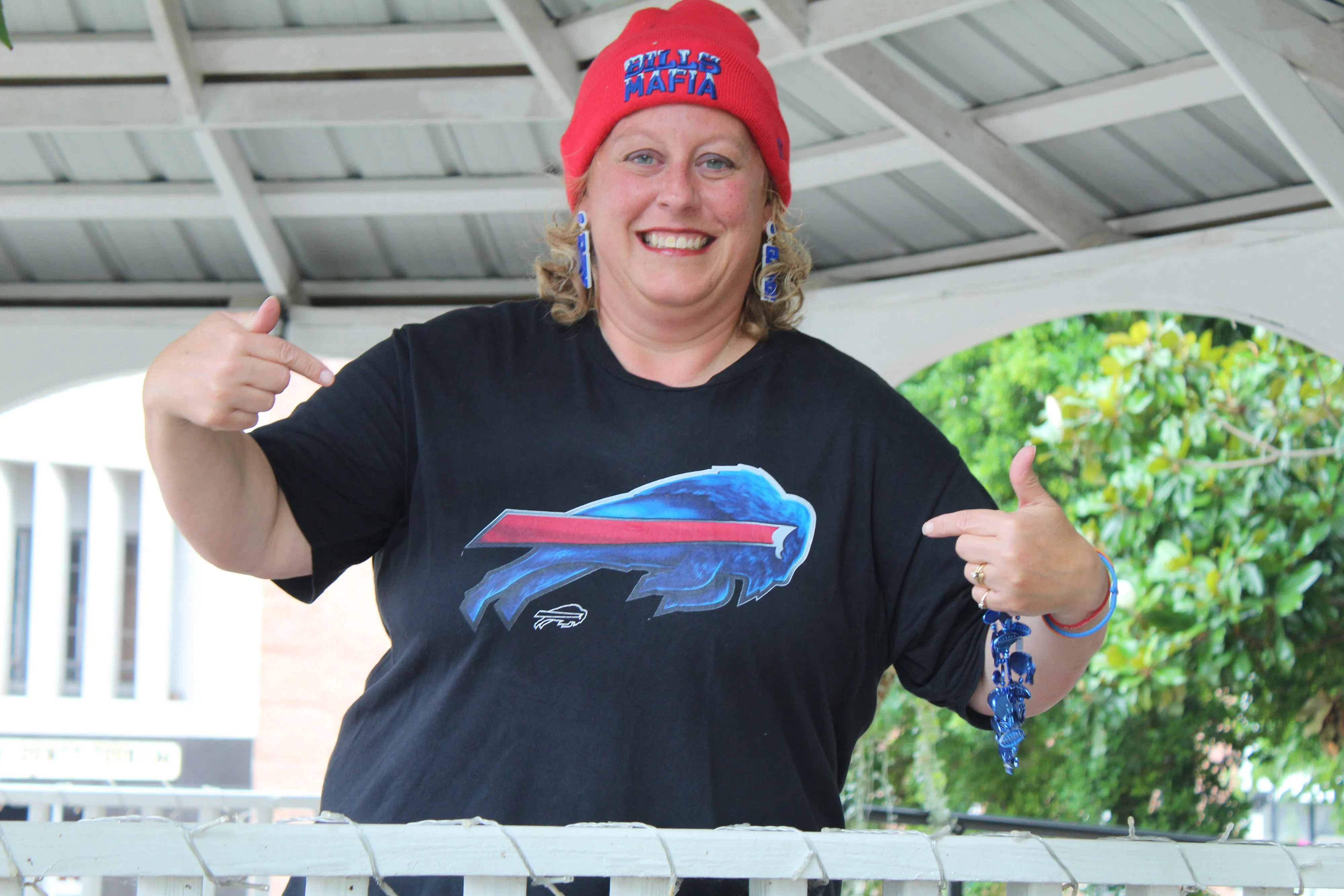By MICHAEL CRIMMINS
Glasgow News 1
Hundreds of people — both families and friends — gathered in the halls of the Cave City Baptist Church for the wedding ceremony of Nicole and Chris on a warm June day in 1998. It was with teary eyes that she began slowly proceeding down the aisle accompanied by the customary Bridal March.
Fast forward 24 years to June 20, 2022, Nicole Randall is sitting in the corridor of the hospital after her annual mammogram. Little could she have known that that day would become seared in her memory now for two reasons.
“You know it’s bad when the actual radiologist comes out and sits down beside you,” Randall said. “She came out, put her hand on my knee and said she had made me a biopsy appointment.”
This was the day she was diagnosed with Stage 2 Invasive ductal carcinoma, or IDC, the most diagnosed form of breast cancer where “the cancer cells have penetrated the duct wall and infected surrounding tissue.” There are approximately eight subcategories of IDC.
This mammogram — that Randall said she almost didn’t go — began her roughly two-year journey.
In Randall’s case she had chemotherapy first after medical personnel installed a “port” that allowed for the chemotherapy injections to go directly to her heart, which would then spread the injection throughout her body. She attended the first four rounds of her chemotherapy appointment, often called the “Red Devil” chemo, every two weeks before getting put on a different chemo drug that Randall described as “not less intense, just different.”
Randall, who is a self-proclaimed naturally energetic person, said the hardest side effect of chemotherapy for her was the unaccustomed exhaustion that comes with this stage of treatment.
“My energy level was always amazing like I never lack energy; I can do whatever I want at any time for myself and everybody else so not being able to walk [more than a couple steps] without sitting down and resting was very hard,” she said. “I was just exhausted and it’s an exhaustion level you can’t push through.”
“I had to pull back some,” Randall said. “I was president of organizations, working a lot, and was heavily involved in my church, and my family. I could not do the things I had to do.”
Though, as she mentioned, she never missed out on any things she wanted to do. She asserted she would not miss out on two years of her life because of this diagnosis, she just had to plan to rest leading up to the desired event — specifically she mentioned her son’s, Ryne’s, football games. In those cases she would rest the entire day in preparation for the afternoon game.
“You just don’t know what you can do until you have to do it,” Randall said
After the 20 weeks of chemotherapy drew to an end, which Randall said didn’t get all the IDC but “significantly reduced it,” she had her double mastectomy surgery before going into roughly a month of radiation.
At one point she remembers having to pause her radiation due to burns on her skin. That combined with the “wanting it to be done already” mindset made radiation harder than her previous chemotherapy, Randall said.
“It was very, very difficult,” Randall said. “I think it was a mental state thing because with chemotherapy I said, ‘Okay I have to do this in order to get better’ but when I got my surgery done…it said no disease detected so it was like ‘why am I doing all this extra stuff?’”
“I did not enjoy radiation at all. Mentally it was harder than chemo,” Randall added.
In March 2024 she finished up her reconstruction surgery, and, apart from having routine blood tests every six months, is free of her IDC.
All-in-all Randall had 16 rounds of chemotherapy, 28 radiation treatments, a double mastectomy and reconstruction surgery.
Through her ordeal she said she learned at least three important truths: The first is to find your faith, find your people and “if you don’t control your mind, you can’t control your body.”
Randall is an active member at River Lake Church in Glasgow and at several points in her lengthy process credited her healing and rehabilitation to God.
Originally Randall was just going to “brute force” her way through treatment without telling, and worrying, anyone else, but her perspective changed when she talked to Misty Garmon; cancer went from an isolating experience to a connecting one.
“The first person I told said to me ‘you have no right to take away others’ blessings [they get] from helping you,’” she said.
After her last treatment, Randall recalls roughly two dozen people — her work, church and school friends — waiting outside to surprise her with cheers and applause.
“This was on a workday,” Randall said. “People are not meant to be isolated; the way we thrive is with others. I’m very, very blessed with a lot of amazing people in my life. It’s hard to do this without them.”
“I can’t imagine going through this now without people,” Randall added.
Finally, she also said it is important to control the fear that usually comes with the word cancer. In pursuit of this goal, and due to general fondness for it, Randall began documenting some of her treatment process on her blog “Immeasurably More” and in a manuscript.
She will be the keynote speaker for the Care Power Hour on July 26 where she will tell her story in greater detail, and expand on the lessons she learned during her process.
“I promised God that I would never shy away from telling my story,” Randall said. “I promised I would never not help someone or educate them. I did not go through this for nothing.”

Comments